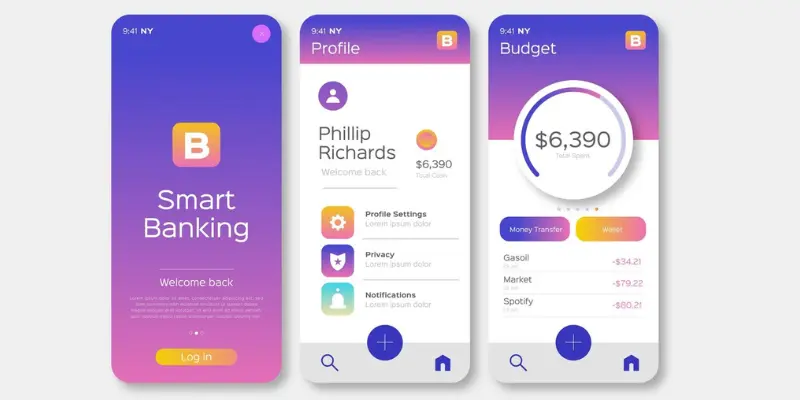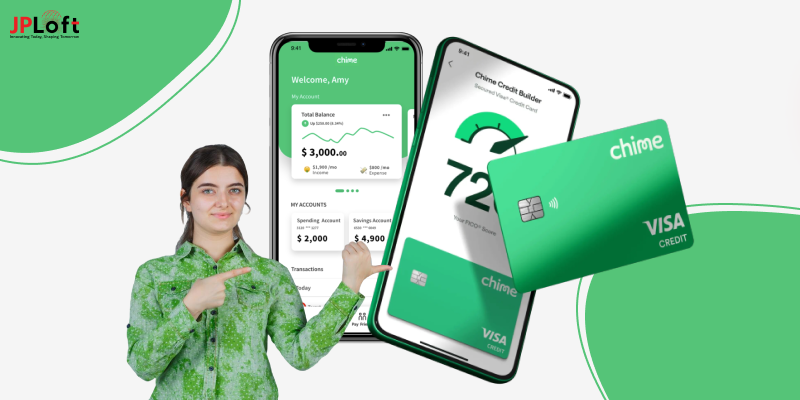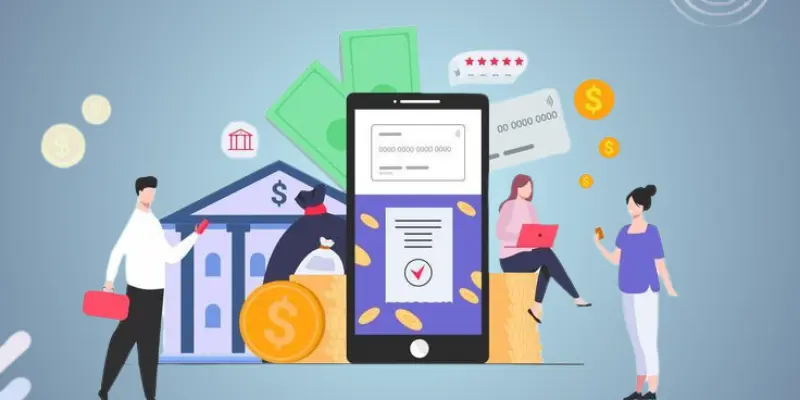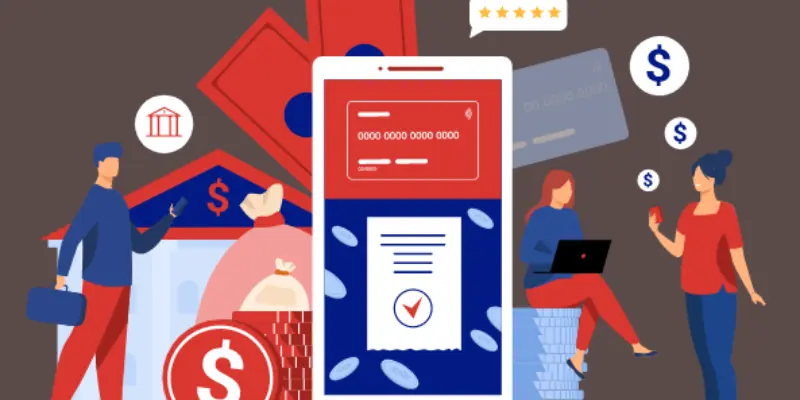The financial sector or banking sector has simply become modern by adopting the trend of digitalization. People are embracing mobile banking systems and with a vast number of users comes the responsibility to ensure their data safety. Mobile banking applications are meant to be safe, secure, and robust so that people can leverage the benefits of online banking services.
Mobile banking enables you to handle your finances in a quick and easy manner. From checking your account balance to paying your bills, the growth of mobile banking app development allows you to fulfill your financial duties more conveniently. However, these new opportunities for business in the banking sector are also leading to new risks. Let's understand how and why mobile banking app security issues are raising concerns among the people.
Why Are Mobile Banking App Security Issues Concerning?
Mobile banking app security issues are a trending topic of discussion because of the increasing cases of scams, breaches, and cyberattacks. The finance sector is the second most affected industry due to data breaches costing 5.90 million in 2023. Though it is less than the previous year.
In 2022, finance and insurance organizations across the globe experienced 566 data breaches, leaking the records of 254 million people. These numbers are shocking but we are here not to scare you but to inform you about the problems and their solutions as well.
51% of the organizations are seeking assistance to increase security investments as a result of a breach. As a leading mobile app development company, we have experience in creating robust security solutions for more than ten years. Creating mobile banking app development solutions is a complicated task but JPLoft is here to guide you. Our team of experts is well-versed with all the latest technologies and knows how to align your ideas with the correct tech stack to develop the best solution. But before diving into the development process, first, you need to understand the mobile banking app security issues and how to overcome them.
Most Common Mobile Banking App Security Issues
Mobile banking apps allow their users to manage all their finances in one place, offering them flexibility and convenience at the same time. Undoubtedly, these apps extend the business opportunities for both tech firms and banks. However, the possibility of mobile banking security risks should not be ignored by either of the parties.
The mobile app development company you have partnered with bears the responsibility for their digital solutions. Analyzing the risks of mobile banking plays a key role in creating a secure environment for transactions within the app. So, let's study the most common mobile banking app security problems.
Phishing
For a long time now, it has advised us to ignore weird emails with suspicious links and never click on anything that looks doubtful. Still, you will be shocked to know that 23% of phishing attacks around the world targeted financial institutions during the second quarter of 2023.
As people are becoming more cautious about this, hackers are coming up with new techniques to loot them. They have created newer versions for the familiar banking security threats and more eye-catching messaging tricks to lure users. The most common but effective way to do so is by sending an email to someone using the ID of their known person or trusted source.
Also Read: How Much Does Cost Mobile Banking App Development
Take this as an example– your client receives an email from their bank manager who is their trusted source. Although using the IDs of other people is very common, scammers give proper thought to it and choose those identities wisely. It is easy to make people fall for this kind of deception. Here is how it goes:
-
-
A mobile banking app is bound to think that they are interacting with a bank employee like they are suggesting and reviewing some data, agreements, settings, etc.
-
A self-proclaimed bank representative asks the user to handle everything according to their way for their convenience.
-
An email pops up, suggesting that the user should click on the link for the further process. And they do it willingly.
-
The previous discussion about possible cyberattacks and how to follow the link to secure a client's money only serves to support the notion that this precaution is necessary.
-
As a result of a single click, users may face a huge money loss or severe data leakage.
Mobile Banking Trojans
Trojans are mobile app malware that generally targets inactive users. The banks share links to their official banking apps as a reminder for users to be attentive online. Hackers create fake apps that closely replicate real bank apps.
Trojans can negatively impact users along with your brand reputation. It is true that people are free to do whatever they want on online platforms but if something like this emerges then you need to deal with the situation very thoughtfully.
The question arises, how does all of this work? We have decoded its very simple mechanism yet infuriating.
-
-
When users search for the official banking app, they are redirected to a third-party site where they will find a malware solution duplicated from the bank’s app. Although the program has a different origin and purpose, at first look it looks identical to the real one.
-
Trojans always work in disguised forms. Making people their target by faking everything
-
The malware makes people think that it has a good purpose and sometimes the Trojan does not look suspicious at all. It swiftly steals data from a user’s bank account, e-payment, credit or debit card within a second.
-
Trojans work so fast that they copy, delete or block that data in a few seconds, making it impossible to use the app.
-
People end up getting confused about what is wrong with their application and how to fix it while trojans send all the collected data to the hackers.
-
And now they have access to the person’s bank account and other details.
-
Trojan works in mysterious ways and following is an alternative method where it scams users by posing as a part of another app.
-
-
A user downloads an app that is computed with Trojan malware with the intent to breach online banking security.
-
When the app is installed, the Trojan malware immediately starts its search for a baking app on the user’s smartphone.
-
It is also seen that Trojan malware asks user permission to read their messages during the installation process. Essentially, the hacker will need OTP codes from the user's messages.
-
The Trojan appears to mimic the home screen whenever a user utilizes the software to check the balance on their credit card or carry out any other online banking function.
-
A person enters their login details without noticing that they are on the substituted interface. It is considered nearly impossible to know that the interface has changed the interface and not to share the credentials with the malware.
-
Thus, Trojans threaten the security of mobile banking apps by tricking users into trusting them to share codes. They manipulate the interface and steal sensitive information.
Keylogging Malware
Spying on sensitive content using a keyboard is not a new thing but definitely, it is the most silent one. Downloading multiple keyboards from unreliable sources is not a smart choice. And Android users should keep this in mind. The operating software of Android supports a wide range of functional keyboards while having lenient policies regarding the download of third-party apps.
Here are a few pointers explaining how it approaches user’s wallets and personal data:
-
-
Users log into their bank’s app using their keyboards.
-
They leak all the info to the hacker all by themselves.
-
You read it right, it is as simple as that. Hackers do not even have to complicate things now. A user just willingly downloads an app without checking properly, offering access to their banking data and apps.
Man-in-the-Middle (MiTM) Attacks
This mobile banking fraud method uses another platform for deceiving and threatening users, which is messages. A user receives an SMS informing them that their bank account has been blocked and in order to get it started they contact the bank operator to find out all the details.
In most of these cases, people start stressing out and become irrational. They dial the bank operator’s number and the person on the other end introduces themselves as a bank worker, and they play along with their given role. This person is called man-in-the-middle or MITM.
Now, let’s recreate the scene and try to understand it with more technical details. Here is a rundown of what happens after the user calls the fake bank number that they received in the text message.
-
-
The fake bank manager asks an individual for their bank account details. These include their credentials like passwords, logins, CVV, PIN, etc.
-
They ask general questions about the services that they would encounter at the bank if the user acts panicked or disoriented. That’s the reaction they want to instigate.
-
But, users should keep in mind that no bank manager would ever ask a client for their credit card or bank account number, not even their CVV or PIN. It is considered unethical for a bank representative to request this detail.
-
Even if a person suspects something suspicious about the message and tries to call the bank’s official number, MITM can intercept that call as well. Yes, it is true, it gets riskier since the user is already tapped into a scam scenario.
-
There is another MITM scenario called DNS cache poisoning. While the one described above is for inattentive users, this one is a more precise and careful way to do the same.
-
-
The malware can be hidden in the actual link to the official bank website users receive in the SMS form.
-
By corrupting the DNS cache, hackers can easily redirect the baking app to the clone site of their bank.
-
There is no chance that one can identify the real or fake one, and all the data collected is transferred to the hackers.
-
Instead of revealing the details on the phone, an individual gets exposed to an unprotected channel.
-
Let's wrap this up with one more eye-opening fact: hackers practice hard to pose like bank employees. They don’t lose their temper or change to a high-pitched tone, even if they get nervous.
Mobile SIM Card Swaps
Nowadays, we generally follow a two-step verification process that includes fingerprint scanning, and Face ID to authenticate phone calls to bank users. These security measures make hacking an account very difficult for scammers. But still, they found new ways to break into the system. We are summing up this list of mobile banking app security issues with the last of their common scheme called SIM card swaps. The mechanism is the following:
-
-
A scammer calls you on your phone several times from an unknown number. They don't care whether you answer or not. They won't talk with you, hang up the call, or be quiet all the time.
-
Then, the scammer will go to the mobile service provider and file a complaint that their phone has been lost together with a SIM card.
-
The hacker learns the last phone calls to the SIM card that they intend to replicate. This is enough of a claim to restore the card.
-
If the phone number of the user has not been attached to their ID, then the mobile service provider has no doubts about believing that the number belongs to the person in front of them.
-
The mobile service provider renews the card number and hands it over to the scammer.
-
Once they get access to the user’s card number, they have the power to change their credentials and steal their money. SMS verifications are no longer a problem for them.
-
The moral of this discussion is that users should share their financial data with no one and banks should use advanced security measures to secure the money of their users. This is the reason mobile banking app development solutions are getting stricter and more advanced with each passing day.
Tips and Tricks to Improve Mobile Banking App Security
Promote the Use of SIM Cards with NFC Technology
The security of mobile banking applications is a hot topic of discussion in the industry, as there have been many incidents of confidential information leakage, financial loss, and non-ethical hacking reported recently. Even credit or debit card details also got leaked and hacked. Many other malicious practices are used by scammers to compromise user data and use these records for further fraud.
Mobile baking is the safest option when you are dealing with uncertain times and want to manage your financial tasks. In addition, there is also a high chance that scammers can hack the details from the cookies stored on mobile and desktops. Therefore, the customers are adamant about adapting web and mobile app support services to their mobile phones. We suggest the use of SIM cards for credit and debit to protect your enterprise from any kind of unknown leakage of confidential information. Customers can easily download their credit card data onto their Near Field Communication SIM card. It is a common alternative to prevent leakage of account details in general. It helps in the improvement of mobile banking security while also improving the app's performance and scalability.
Also Read: Guide to Develop a Mobile Banking App
Add Multi-Factor Authentication Feature
The finance industry has shifted from paper baking to paperless banking, helping the apps quickly pick up the pace and traverse the market. Banks and banking software development companies have mutually decided to put some security checkpoints on the app. And we already know this app has multi-factor authentication. These points are specially designed to check the authenticity of customers.
But have you wondered what the need for a multifactor authentication feature is? As we discussed earlier, it is the checkpoints where the app asks for a password. In some cases, one password is linked with several other passwords, offering another option for defense against their mobile banking systems. This feature adds a layer of protection and provides multiple security blocks, face recognition, fingerprints, and a one-time password, to the users.
End-to-end Encryption to Prevent Information leakage
Every digital transaction occurs between two parties: one is the sender and the other is the receiver. People are doing transactions for everything through their mobile apps or financial mobile payment gateways. Anyone can be a user, including common people, retailers, payment brands and issuing banks.
Each day, month, or year, billions of dollars worth of data is exchanged between these mobile banking apps. As a result, online transactions or purchases are the main target for cybercriminals. Therefore, it is crucial to encrypt the transactions of your business and customers as well. End-to-end encryption is a robust solution to this critical issue, as it ensures data security and stability. It is one of the best safety measures for protecting mobile banking app security from fraud and unethical users.
Integrate In-App Fingerprint Device
There have always been advancements and breakthroughs for corporate safety. The development of fingerprint recognition is another key innovation of the twenty-first century. This adds yet another level of security to mobile apps as it prevents the accounts from being hacked. It was created with many factors in mind, like the type of device, location, time, IP address, browser, screen size, and more. The smart gadgets are equipped with a fingerprint scanner that secures user data within the system. You shouldn't be concerned if the gadget with your personal information falls into the hands of a hacker because it is secured with your fingerprint information.
When you decide to go for mobile banking app development, you need to ensure that your app is protected perfectly with no chances of data leakage. The developers should know about the features and functionalities of the app, they are going to add to it. Users from any domain or industry can use this feature easily.
Data Breach
App security is always a concern for the owners because of the hackers who significantly invade the private and confidential data of the users. A data breach is one of the most common problems businesses are facing with their existing systems. Reports suggest that during the first half of 2020, 36 billion records will be exposed due to data breaches.
A data breach can happen to any business or organization. Hence, our mobile banking app development company ensures the safeguarding of our information. Our mobile banking apps are capable of storing both types of data—personal and business. Hackers cannot get essential information like users’ passwords, account numbers, and other credentials.
PSD2’s Financial Consequences
The European Union has made some amendments to the Payment Services Directive (PSD2), including multi-factor authentication for online European payments. PDS2 advises financial institutions to secure payment accounts to contest internet transfers made by users via two-factor authentication (2FA). This authentication is a combination of what the user recognizes, like a password or PIN, and something the user has, like a code developed by a mobile app or a biometric identifier.
This is an online payment method for international trading to make transactions between two banks more secure and protected. This type of mobile banking application will not allow any third-party company to get information about the customer without his or her consent. It saves the company from fraud.
How JPLoft Can Help You With Mobile Banking App Development?
JPLoft offers mobile banking app development solutions tailored to the requirements of your banks and financial institutions. From finalizing the app concept to deploying the app, we focus on providing robust mobile banking security measures for an enhanced customer experience. Most financial institutions are facing challenges regarding the safety of their user data and transactions, so we are aiming to find stable solutions through mobile app development.
We have a dynamic team of experts who are well-versed in multiple technologies and follow a range of practices and rules. We reduce the risk of legal complications while ensuring regulatory compliance with strict industry standards and regulations. You can hire mobile app developers to integrate advanced mobile banking application security measures into your app and protect it from end-users against financial crimes, fraud, and money laundering.
Wrapping Up
We know that the finance industry is transforming at full speed. Banks are going digital and customers are leveraging baking services through their smartphones. However, these advancements have also led to an increase in the rate of cybercrime. As a result, financial institutions are embracing modern technologies like blockchain, AI, ML, etc. to resolve all the issues related to mobile banking app security. Mobile banking app development is also growing with innovations while introducing new apps or products into the market. With the help of an experienced mobile app development company, you can integrate the above-mentioned features and overcome all the security challenges.














Share this blog